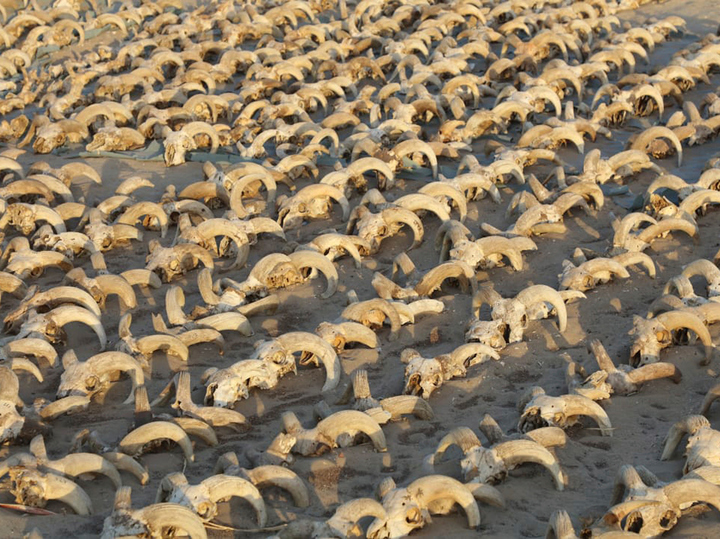A huge number of sheep skulls found have intrigued scientists
Thousands of animal mummies dating back to the era of Ancient Egypt have been found by archaeologists during excavations. At least 2,000 mummified ram heads dating back to the Ptolemaic period and a sumptuous Old Kingdom building have been unearthed at the Temple of Ramses II in the ancient city of Abydos in southern Egypt.

Mummified sheep, dogs, wild goats, cows, gazelles and mongooses, as well as ram's heads have been found at the temple, which are believed to be votive offerings, indicating continued veneration of Ramses II at the site some 1,000 years after his death. The Ministry of Tourism and Antiquities said in a statement, Reuters reported.
The mummified remains, some of which were still wrapped in linen, were found in one of the recently discovered vaults at the northern end of the temple, said Mostafa Waziri, secretary general of the Egyptian High Council of Antiquities.
In a statement from the Ministry of Tourism and Antiquities claims that these discoveries will expand knowledge of the site for more than two millennia, right up to the Ptolemaic period. The Ptolemaic period lasted for about three centuries, until the Roman conquest in 30 BC.
Ancient Abydos, located in the Egyptian province of Sohag, about 435 kilometers south of Cairo, is one of Egypt's largest, albeit less visited, archaeological sites. It was a necropolis of early ancient Egyptian nobility and a pilgrimage center for the worship of the god Osiris, according to Reuters.

The excavations were carried out by a mission from the Institute for the Study of the Ancient World at New York University.
Along with mummified animal remains, a team of archaeologists discovered a large palatial structure with walls about five meters thick, belonging to sixth dynasty of the Old Kingdom, in addition to several statues, papyri, remains of ancient trees, leather clothing and shoes.
According to the head of the mission, Samekh Iskander, the found structure could help “restore the feeling of the ancient landscape of Abydos before the construction of the temple of Ramses II”.
Samekh Iskander noted that the discovery of such a large number of mummified rams, presumably as votive offerings placed inside the temple, points to the unprecedented practice of ram cult at Abydos during the Ptolemaic period. This indicates that the memory of Ramses II was still venerated in Abydos even a thousand years after his reign (1303-1213 BC).
Mohammed Abdel-Badei, head of the central department of antiquities of the Upper of Egypt, said the mission was also able to clear the northern walls of the temple enclosure and its various structures, which clearly defines the boundaries of the temple property and helps us better understand the daily life at the site, its administration and other aspects of worship.
This will lead to a revision of the image of the temple and its details, as they were perceived in the course of earlier studies since the discovery of the temple more than 150 years ago. The mission also uncovered a number of statues, papyri, remains of ancient trees, leather clothing and shoes.
The new discoveries contain a wealth of information that greatly expands our knowledge of the location of the temple, located along the Nile more than 400 kilometers to south of Cairo, and covers a period spanning more than two millennia, from the Sixth Dynasty to the Ptolemaic period.

